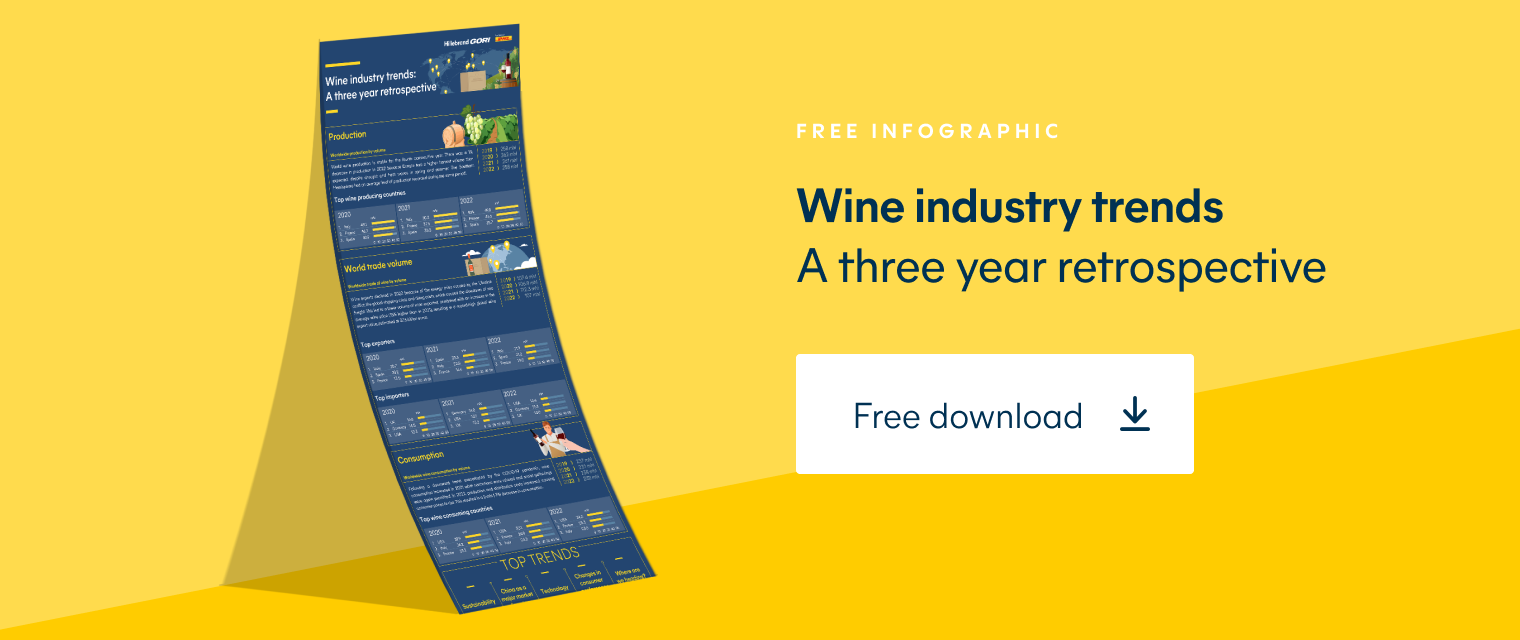Business of Wine: From Grapes to Bottle to Consumer
If you’re in the business of wine, you understand the passion that goes into making wine.
But you also need to understand what’s beyond the wine to run your business successfully. In getting wine from the vineyard to the consumer, many important business decisions are made along the way.
Understanding the Business of Wine
And as a wine exporter or seller, you need to understand:
Your consumer: Who is your buyer/consumer? How do they purchase wine? What are their preferences? You also want to consider if your business is in the mainstream category or a niche/premium segment.
Market demand and figures: Figuring out what types of wine are in demand is a must. Consider grape varieties, wine style (fresh vs. complex, young v. aged), regions, appellation and whether consumers drink locally produced wine like those in Spain or import wine like those in the UK. As older, more affluent consumers drive growth in the U.S. wine market, wine brand owners are finding the need to re-engage with an audience looking for more premium and interesting wine. And while nearly 30% of premium wineries reported having their best financial year ever in 2021, they may not be doing enough to attract younger multicultural consumers who are more health-conscious.
Trends: It’s also important to be aware of business and industry trends such as innovations in production and wine experimentation. For example, there has been a shift in packaging with the development of wines in cans and plastic
bottles. Though it isn’t readily accepted in all markets. It's also important to keep an eye on trends in the alternative wine market, which includes natural wine - organic, biodynamic and orange (skin contact) wines. The concept
of natural wine ranks first on the 2022 Wine Intelligence Alternative Wine Opportunity Index,
followed by wines that are organically and sustainably produced.
How to get wine from the winery to consumers: It's important to know where the wines you're looking for are produced, then, you need to figure out the optimum way to import and distribute them. You'll need to build a business model that considers how you will get wine from the producer or supplier to your target customer. This is where a freight forwarder that specialises in wine like Hillebrand comes in.
Your competitors: As a wine importer, you’ll be competing with other companies looking to bring the same wines into the country. Research other wine importers or distributors to determine what they're doing well. Find out if there are a lot of offers for mainstream wine regions or grape varieties. Also, consider concentrating on a "niche" market, like organic or fair-trade wines, if that’s what your target market is interested in.
With the right information, you can balance your inventory with customer demand, which will lead to profit and better cash flow.
As a buyer, you need to understand:
Your consumer: What is your consumer willing to pay for the wine? Your pricing strategy should consider costs, competition, perceived value and what the market will bear. Knowing what the consumer wants is the foundation for good sales results. Buy wines based on their preferences, not yours. Remember, you are not the consumer.
Market demand and figures: Make sure you have the latest trade data and Nielsen numbers. This will help you make the right purchase decisions.
Trends: Pay attention to what's trending in the market and look for developing niches. Since there is an increasing concern for sustainability, be sure to add value to your portfolio with organic and vegan-friendly wines.
Market share: How much of the market do you want to capture? This will help guide your marketing and advertising efforts. Once you have achieved a certain percentage of market share, you can aim for a higher rate in the next quarter.
Inventory turnover: This is the number of times you sell and replace your stock. Keep an eye on inventory that's not moving. You may need to mark it down or get rid of it if it's not selling.
Profitability: Understand your margins and make sure you're making a profit on each sale. What is the difference between the cost of the wine and the selling price? This will help you understand how much markup to charge. A good rule of thumb is to have a gross margin of at least 30%.
The complexity of wine shipping
The first thing to consider when it comes to shipping is the cost of bringing a bottle to your market to create a value chain to fix the price that the wine deserves in your market as well as get the profit you’re expecting.
Brand positions in a highly competitive and stagnant market are another important component.
You'll also need to understand:
Legislation: Make sure you're aware of the different laws and regulations that exist in the countries you trade with or choose the right expert partner to help you navigate the process.
Regulation per trade lane: Trade lanes are the routes that wine takes from one country to another.
Taxes: When importing wine into a country, you might need to pay taxes. The amount of tax will depend on the country you're importing into and the type of wine you're importing.
Duties: Duties are taxes that might be imposed on imported goods. The amount of duty you'll need to pay will depend on the country you're importing into and the type of wine you're importing.
Licences: To import wine into a country, you might need a licence. The requirements for getting a licence vary from country to country.
In addition, you will need to have a good understanding of what’s involved in the buying and selling of wine and how to manage it. This involves a multi-step process that includes considering the type of wine, understanding the minimum quantities the winery might be required to buy, reacting to changes in demand and taking into account lead times.
You must also balance the pros and cons of shipping cased versus bulk wine depending on the style you're looking for and the volume you need to ship.
What is the best way to ship wine?
Wine is a delicate product, so understanding how to ship it correctly is critical for any business in the wine trade because you want to protect its quality during transport.
Exposure sudden temperature changes can alter the wine's condition. So it's important to take measures to protect the wine during transport, which involves choosing the right container type for the product, whether it’s dry, insulated or refrigerated containers.
The business of wine is complex, but understanding the different types of businesses involved will help you make the best decisions for your business.





